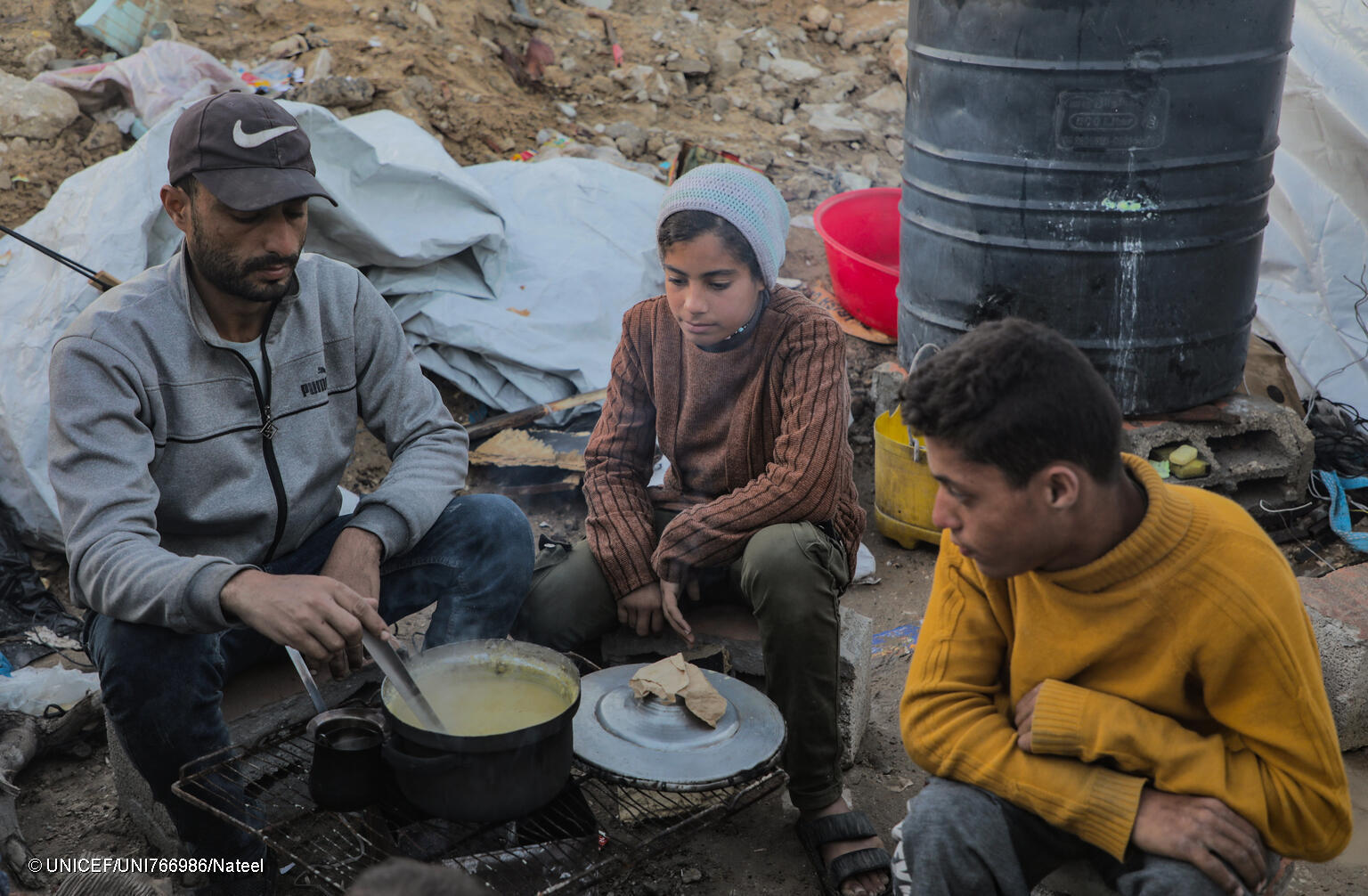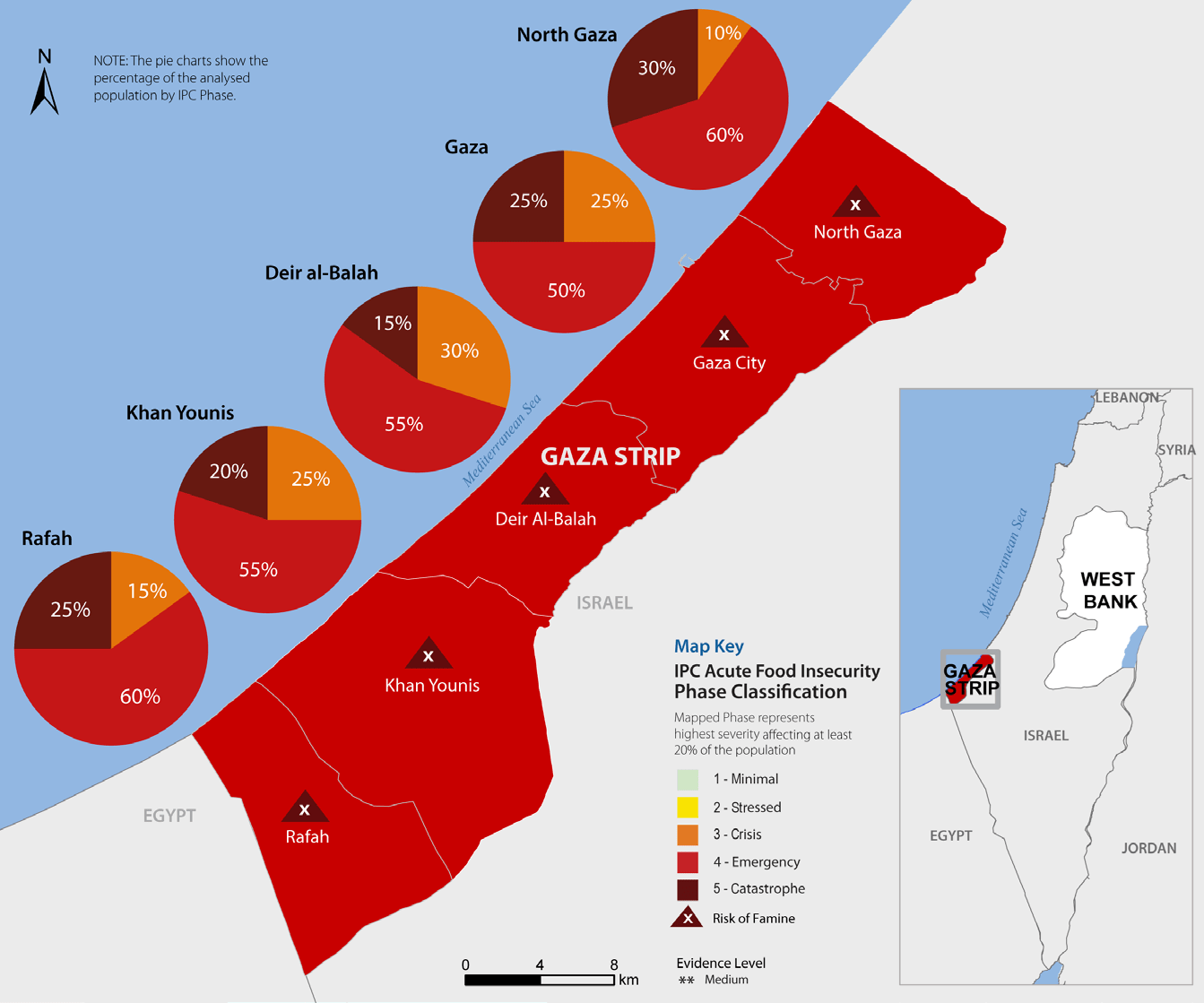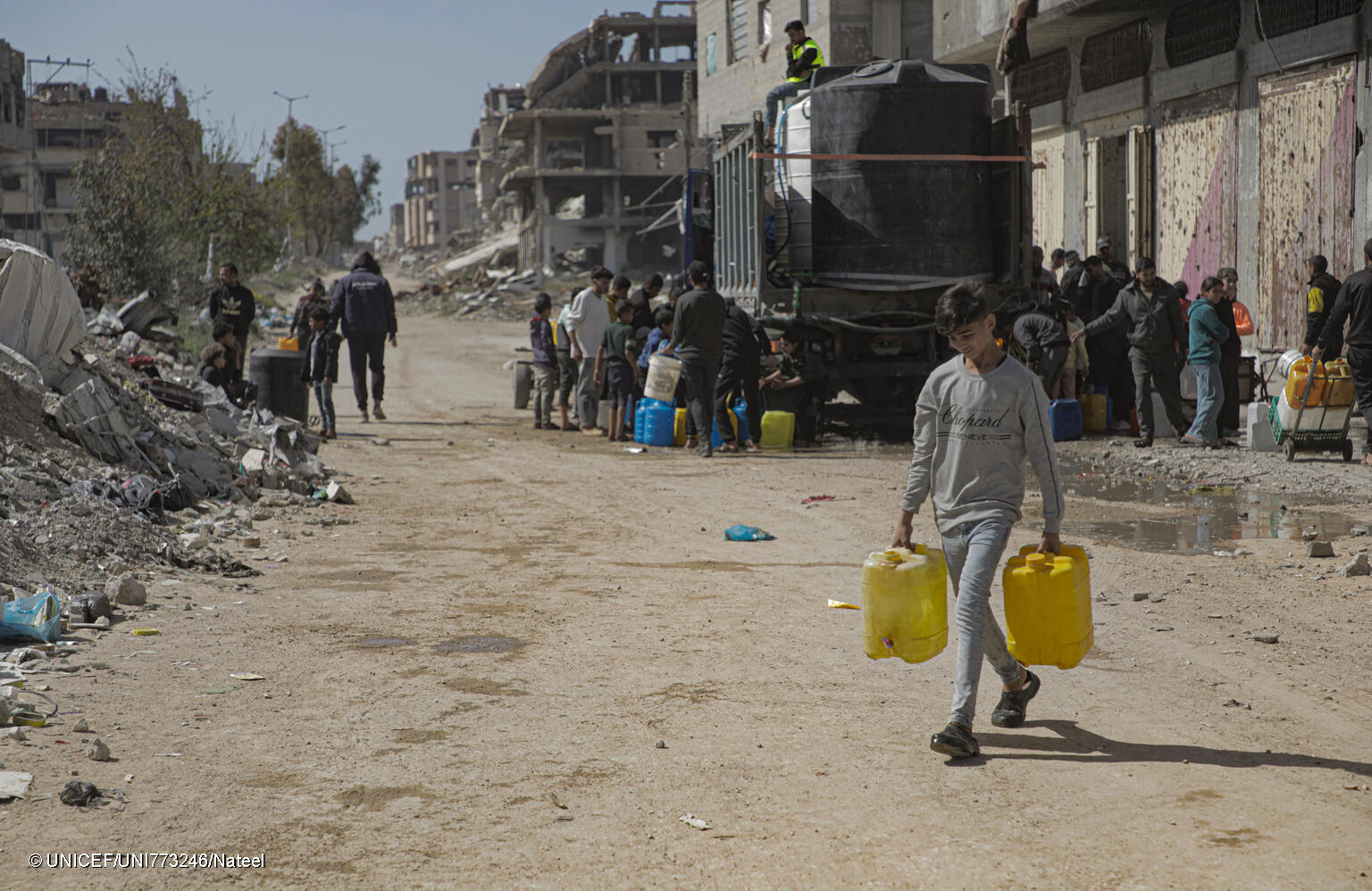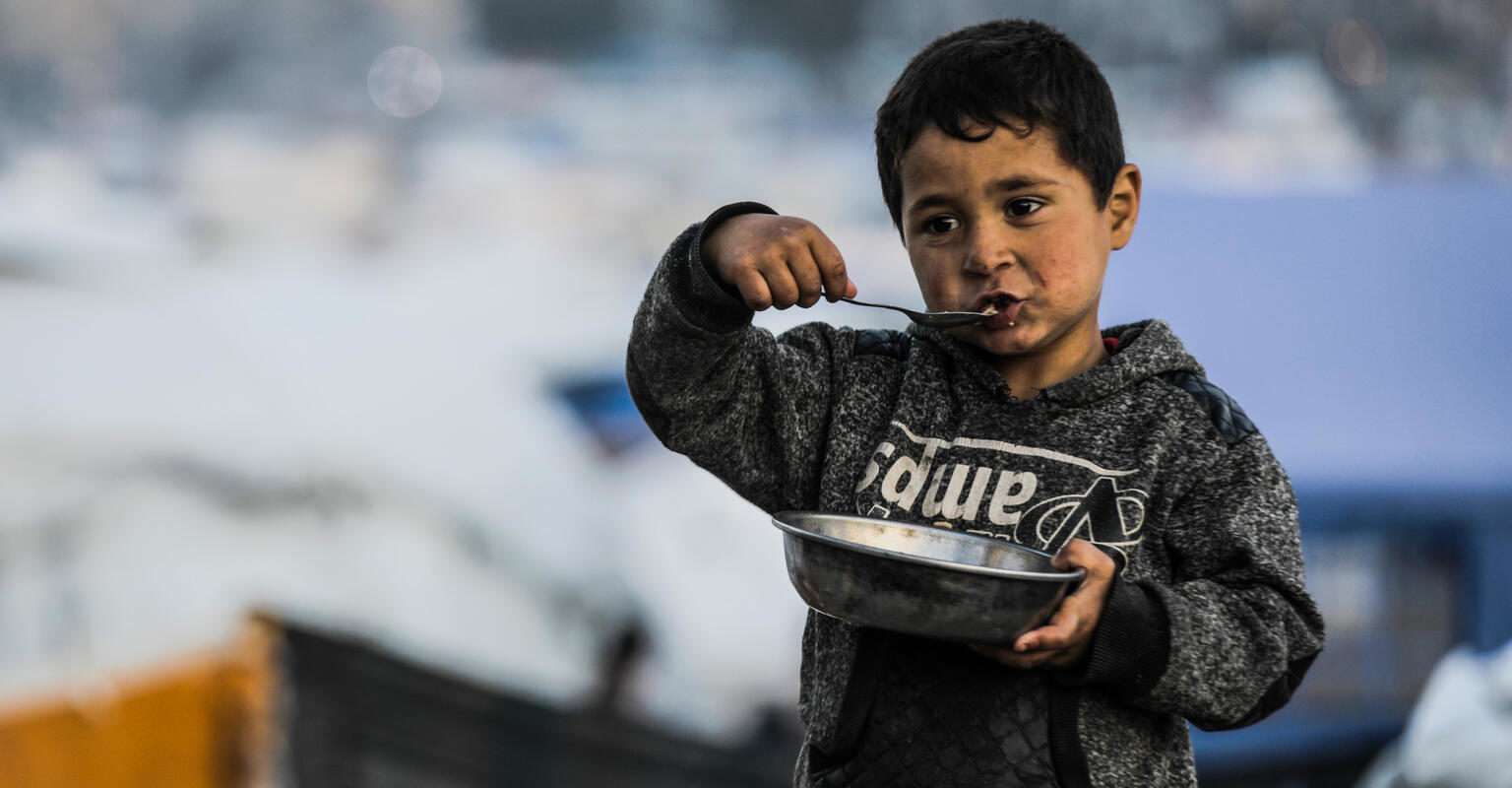The humanitarian situation in Gaza is rapidly deteriorating. After more than two months of complete blockade, there is a critical risk of famine.
With deadly malnutrition cases rising, thousands of lives – particularly those of children – are at risk. Almost the entire population of Gaza was already struggling with a severe lack of food, but the months of restrictions on humanitarian aid have pushed hundreds of thousands of people to the brink of famine, starvation, and death.
- Below we answer your questions about the rapidly developing situation, what a famine could mean, and what needs to happen to save children’s lives.

Families in Gaza live in makeshift tents. Following renewed intense bombardments, families have been once again forced from their homes and now face starvation.
What is happening, and how bad is it?
For many weeks now, no aid or commercial goods have been allowed to enter Gaza. At the same time, the endless bombings continue to displace families and destroy infrastructure. With food stocks nearly gone, most people simply cannot access enough to eat.
100% of Gaza’s population – around 2.1 million people – is facing crisis levels of food insecurity.
Food prices in markets have spiked to astronomical levels, putting what little food is available out of reach for most families. They are resorting to searching rubble and rubbish for food.
And yet, for many, things will now get worse. Nearly a quarter of the population – 470,000 people – face catastrophic famine conditions in the coming months. This means families are facing extreme food shortages. They could starve to death.
What does “famine” mean?
A famine is not simply a lack of food. It is the most extreme form of food crisis, defined by widespread starvation, high levels of acute malnutrition, and deaths.
In famine-hit areas, people will die every day from starvation.
While famine has not yet been officially declared, the Integrated Food Security Phase Classification (IPC) – an international body – has warned that Gaza remains at high risk of entering famine conditions between May and September 2025, unless urgent action is taken.
This would mean even greater loss of life, particularly among the most vulnerable: young children, pregnant and breastfeeding women, the elderly, and those with chronic illnesses.
In this worst case scenario, health services would fully collapse due to lack of personnel and supplies. Lack of treatment options for diseases would lead to the rapid deterioration of the health and nutrition status of the population. Lack of clean water, collapse of the solid waste system and overcrowding, would worsen health conditions and increase deaths.
Famine would mark a complete breakdown of the ability of people to meet their basic needs for survival.

The IPC analysis found everyone in Gaza is suffering from a lack of food and some areas face catastrophic conditions marked by starvation and death.
How is UNICEF helping now?
UNICEF is doing everything possible under extraordinarily difficult conditions. Despite the blockade, UNICEF continues to provide clean water and support limited health services. However, critical nutrition supplies are running dangerously low. Hundreds of pallets of life-saving food are prepared and waiting, but cannot enter Gaza due to ongoing restrictions.
During the ceasefire earlier in the year, UNICEF was able to scale up nutrition programmes for malnourished children. But due to the ongoing conflict and blockade, currently only about 120 (60%) of nutrition treatment centres remain operational, down from 200 at the height of humanitarian access.
In photos: malnutrition crisis in Gaza
no images were found
What more needs to happen?
The situation remains critical – but it is not without hope if immediate action is taken now. To prevent further starvation and save lives, the following must happen:
- A ceasefire now and a lifting of the blockade.
- Safe and unhindered access for humanitarian aid across Gaza.
- Restoration of essential services, including health, nutrition, water, and sanitation.
- Resumption of commercial flows to stabilise markets and lower food prices.
It is vital to understand that food alone is not enough. Malnourished children need specialist treatments, medical supervision, clean water, and time to recover. Even those who have responded well to treatment remain vulnerable without ongoing support.
UNICEF remains committed and ready to act. With safe access, we can reach every child who needs help – but we need support from people like you.

A child carries water containers back to his tent after filling them from tanks of safe water brought by UNICEF trucks. A multifaceted approach to combating famine is needed, including providing safe water supplies.
Can you help children in Gaza?
Supporting UNICEF today means you can help children across Gaza. By giving a gift, particularly a monthly gift, you allow us to work fast to save lives and run long-term programmes that keep vulnerable children safe and healthy despite the multiple threats they face.


